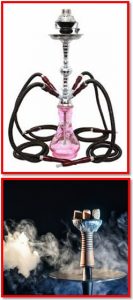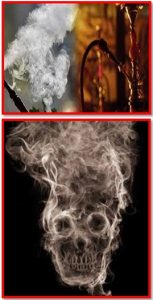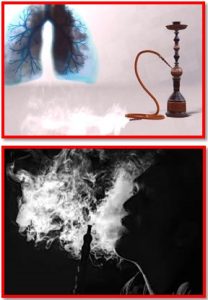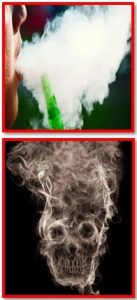NARGILA
NARGILA !!!
Šta je nargila ?
It is a smoking instrument designed so that chilled tobacco smoke that is flavored with the addition of some dried fruit or aromas of some plants passes through water or another liquid and further through the flexible hose reaches the one who uses it. Hookah smoke is created by igniting coal with a flame that heats tobacco, or in newer versions of hookah, tobacco is ignited electrically.

Hookah smoke composition
Combustion of coal that heats tobacco in hookah produces high concentrations of carbon monoxide, heavy metals and carcinogens that can be linked to cancer in humans, the most important of which are nitrosamines, polycyclic aromatized hydrocarbons (PAHs), formaldehyde and benzene.

Compare hookah and cigarettes
Research confirms that hookah consumption lasts between 20 -60 minutes and involves about 200 breaths of smoke, while cigarette consumption lasts about 5 minutes with about 20 breaths. The volume of smoke inhaled using a hookah is 150 times higher than the volume of smoke inhaled by smoking a cigarette. One hour of hookah consumption is equal to 100 smoked cigarettes, it depends on the way the hookah is smoked, the smoke is inhaled and the length of stay in the room where the hookah is consumed.

Hookah and health consequences
Hookah smoking is associated with a number of short-term (acute) and long-term (chronic) health consequences.
Acute consequences:
⦁ Heart problems, increased heart rate and increase in blood pressure,
⦁ Difficulty breathing, decreased respiratory capacity, pneumonia,
⦁ Loss of consciousness and signs of acute carbon monoxide (CO) poisoning
Chronic consequences:
⦁ Chronic obstructive pulmonary disease, recurrent pneumonia with decreased immunity, lung cancer.
⦁ Damage to the mucous membranes of the mouth, cancer of the oral cavity, esophagus, stomach and bladder.
⦁ Gum disease (periodontitis), osteoporosis and changes in vocal cords and throat,
⦁ Cardiovascular diseases,
⦁ Mental health disorders, association with epilepsy in children and adolescents.

Is staying in a hookah smoking area harmful to health?
Staying in a closed room where hookah is smoked by other people poses a health risk, due to inhalation of numerous toxic and carcinogenic substances. People exposed to hookah tobacco smoke have frequent congestion (nasal congestion), persistent and prolonged cough, which can lead to narrowing of the bronchial lumen (bronchoobstruction) and more frequent pneumonia.
Are hookahs addictive
In hookahs with a tobacco mixture, nicotine is present in significant amounts that is addictive. Research shows that hookah use is addictive just like other tobacco products.

How does hookah contribute to the spread of COVID-19?
Hookah smoking opens up the possibility of transmitting various infectious diseases. The risk of transmitting the disease among hookah consumers is represented by: hygienically inadequate manual preparation of the hookah, and the oral extension and intestine that are shared between several people. Most catering facilities do not maintain proper hygiene and disinfection of hookah appliances between individual consumption sessions.
The use of hookah increases the risk of transmitting and spreading a number of infectious diseases such as: bacteria and viruses that cause respiratory infections, hepatitis C virus, Epstein Barr virus, Herpes Simplex virus, tuberculosis, Heliobacter pylori and Aspergillus.
Wearing a mask is often neglected in places where young people smoke hookahs, physical distance is not maintained, which increases the risk of spreading COVID-19.

Is hookah consumption safe at home during the COVID-19 pandemic?
Consumption of hookah in the house is not safe for the one who consumes it, nor for other household members who inhale hookah smoke. The house must not be a place to promote smoking in the context of the COVID-19 pandemic. Exposure to tobacco smoke by other smokers or passive smoking is highest in the home, and children, pregnant women, and the chronically ill represent the most vulnerable groups. Children exposed to secondhand smoke have a higher risk of developing lower respiratory tract inflammation, bronchial asthma, middle ear inflammation, and are more likely to have symptoms of viral pneumonia.

